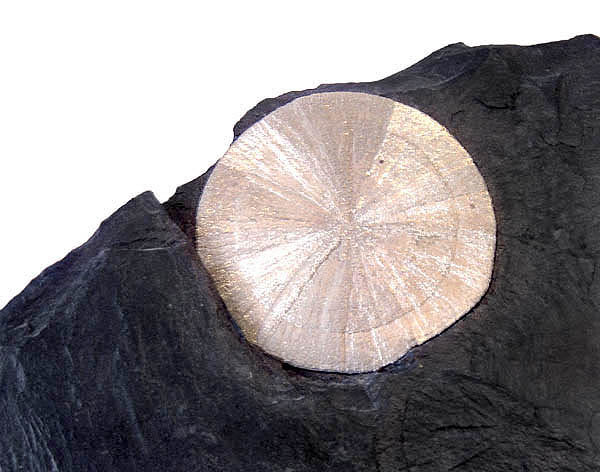crystal habit on:
[Wikipedia]
[Google]
[Amazon]
 In
In  Factors influencing habit include: a combination of two or more crystal forms; trace impurities present during growth;
Factors influencing habit include: a combination of two or more crystal forms; trace impurities present during growth;
 In
In mineralogy
Mineralogy is a subject of geology specializing in the scientific study of the chemistry, crystal structure, and physical (including optical) properties of minerals and mineralized artifacts. Specific studies within mineralogy include the proce ...
, crystal habit is the characteristic external shape of an individual crystal
A crystal or crystalline solid is a solid material whose constituents (such as atoms, molecules, or ions) are arranged in a highly ordered microscopic structure, forming a crystal lattice that extends in all directions. In addition, macr ...
or crystal group. The habit of a crystal is dependent on its crystallographic form and growth conditions, which generally creates irregularities due to limited space in the crystallizing medium (commonly in rocks
In geology, rock (or stone) is any naturally occurring solid mass or aggregate of minerals or mineraloid matter. It is categorized by the minerals included, its chemical composition, and the way in which it is formed. Rocks form the Earth's ...
).Klein, Cornelis, 2007, ''Minerals and Rocks: Exercises in Crystal and Mineral Chemistry, Crystallography, X-ray Powder Diffraction, Mineral and Rock Identification, and Ore Mineralogy,'' Wiley, third edition, Wenk, Hans-Rudolph and Andrei Bulakh, 2004, ''Minerals: Their Constitution and Origin,'' Cambridge, first edition,
Recognizing the habit can aid in mineral identification and description, as the crystal habit is an external representation of the internal ordered atomic arrangement. Most natural crystals, however, do not display ideal habits and are commonly malformed. Hence, it is also important to describe the quality of the shape of a mineral specimen:
* Euhedral: a crystal that is completely bounded by its characteristic faces, well-formed. Synonymous terms: idiomorphic, automorphic;
* Subhedral
Euhedral crystals (also known as idiomorphic or automorphic crystals) are those that are well-formed, with sharp, easily recognised faces. The opposite is anhedral (also known as ''xenomorphic'' or ''allotriomorphic''): a rock with an anhedral ...
: a crystal partially bounded by its characteristic faces and partially by irregular surfaces. Synonymous terms: hypidiomorphic, hypautomorphic;
* Anhedral: a crystal that lacks any of its characteristic faces, completely malformed. Synonymous terms: allotriomorphic, xenomorphic.
 Factors influencing habit include: a combination of two or more crystal forms; trace impurities present during growth;
Factors influencing habit include: a combination of two or more crystal forms; trace impurities present during growth; crystal twinning
Crystal twinning occurs when two or more adjacent crystals of the same mineral are oriented so that they share some of the same crystal lattice points in a symmetrical manner. The result is an intergrowth of two separate crystals that are tightly ...
and growth conditions (i.e., heat, pressure, space); and specific growth tendencies such as growth striations. Minerals belonging to the same crystal system
In crystallography, a crystal system is a set of point groups (a group of geometric symmetries with at least one fixed point). A lattice system is a set of Bravais lattices. Space groups are classified into crystal systems according to their poi ...
do not necessarily exhibit the same habit. Some habits of a mineral are unique to its variety and locality: For example, while most sapphire
Sapphire is a precious gemstone, a variety of the mineral corundum, consisting of aluminium oxide () with trace amounts of elements such as iron, titanium, chromium, vanadium, or magnesium. The name sapphire is derived via the Latin "sap ...
s form elongate barrel-shaped crystals, those found in Montana
Montana () is a U.S. state, state in the Mountain states, Mountain West List of regions of the United States#Census Bureau-designated regions and divisions, division of the Western United States. It is bordered by Idaho to the west, North ...
form stout ''tabular'' crystals. Ordinarily, the latter habit is seen only in ruby
A ruby is a pinkish red to blood-red colored gemstone, a variety of the mineral corundum (aluminium oxide). Ruby is one of the most popular traditional jewelry gems and is very durable. Other varieties of gem-quality corundum are called sapp ...
. Sapphire and ruby are both varieties of the same mineral: corundum
Corundum is a crystalline form of aluminium oxide () typically containing traces of iron, titanium, vanadium and chromium. It is a rock-forming mineral. It is a naturally transparent material, but can have different colors depending on the ...
.
Some minerals may replace other existing minerals while preserving the original's habit, i.e. pseudomorphous replacement. A classic example is tiger's eye quartz
Quartz is a hard, crystalline mineral composed of silica ( silicon dioxide). The atoms are linked in a continuous framework of SiO4 silicon-oxygen tetrahedra, with each oxygen being shared between two tetrahedra, giving an overall chemical ...
, crocidolite asbestos replaced by silica
Silicon dioxide, also known as silica, is an oxide of silicon with the chemical formula , most commonly found in nature as quartz and in various living organisms. In many parts of the world, silica is the major constituent of sand. Silica is o ...
. While quartz typically forms ''prismatic'' (elongate, prism-like) crystals, in tiger's eye the original ''fibrous'' habit of crocidolite is preserved.
List of crystal habits
See also
* Abnormal grain growth * Grain growth *Crystal structure
In crystallography, crystal structure is a description of the ordered arrangement of atoms, ions or molecules in a crystalline material. Ordered structures occur from the intrinsic nature of the constituent particles to form symmetric patterns t ...
References
{{ Mineral identification Crystallography Mineralogy concepts Mineral habits